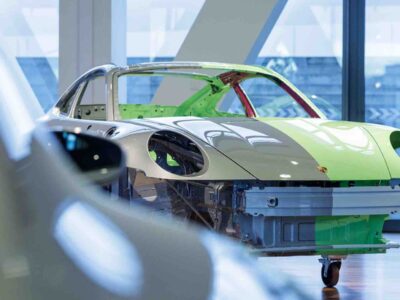Ford Motor Company’s new electric truck, the full-size Ford F-150 Lightning, has shattered demand expectations, more than doubling its production target. Though the company expressed some concerns that truck drivers would not want to immediately flip the switch to electric, the pre-launch excitement about the trucks positively indicates that is far from the truth. Ford’s original target of 40,000 Lightnings by 2024 is now at 80,000. The push is primarily driven by commercial customers eager to reduce their carbon footprints by adding electric trucks to their fleet.
“We are excited with customer demand for the F-150 Lightning and already have 120,000 customer reservations, and we will continue to look for ways to break constraints and meet customer demand,” said Ford, in an official statement.

Ford is already hard at work on the new truck and has invested $850 million to double production efforts immediately. Fifteen thousand Lightnings are set to roll off the production line next year, followed by 55,000 in 2023. A second version of the Lightning – the first to use Ford’s TE1 truck architecture – will launch in 2025, with an expectation that nearly 160,000 will be made annually. The Dearborn, Michigan-based company is focused on moving its most popular models to electric first. With the F-150 as the longtime star of the show, the transition is only natural. The Transit van and Mustang Mach-E SUV are next in line.
Ford, like many automakers, is racing to shift their gas-guzzling fleet to all-electric vehicles. This comes on the heels of Congress proposing a bipartisan infrastructure bill supporting EV charging infrastructure and the new federal administration’s push to transform the American fleet to keep up with innovation pressures from China. The United States government recently asked for $174 billion to aid in American electric vehicle sales, infrastructure, and manufacturing. Ford is increasing its electric vehicle investment by a third to more than $30 billion by 2030. The goal is for at least 40 percent of the company’s production to be all-electric in the next decade.

The careful ramp-up to electric vehicles comes amid a global production cut due to microchip shortages and supply chain issues affecting vehicle manufacturing worldwide. The Lightning roll-out is designed to make sure commercial and individual customers eager to transition to a more sustainable vehicle can do so without delay. The demand for the Lightning is a strong indicator in support of predictions that demand for electric vehicles is set to soar over the next few years. With Tesla, Chevrolet and Lordstown all working on highly-anticipated electric truck models, it’s clear that consumers are ready to help the nation reach its climate goals by reducing carbon footprints one truck at a time.





